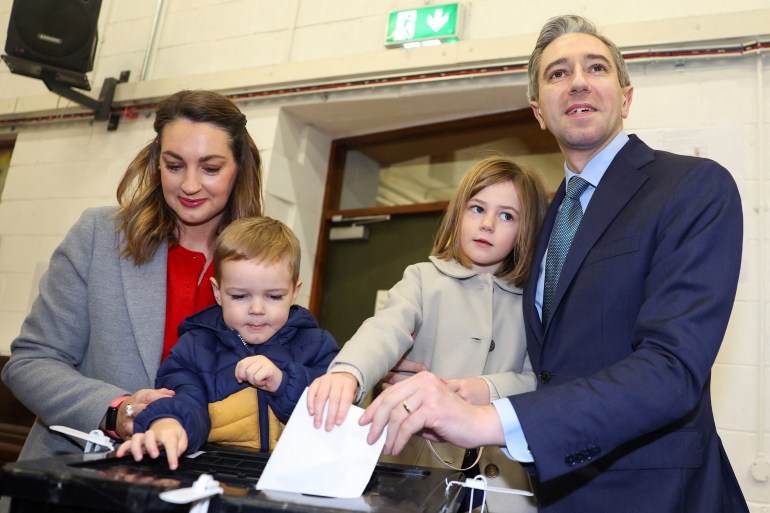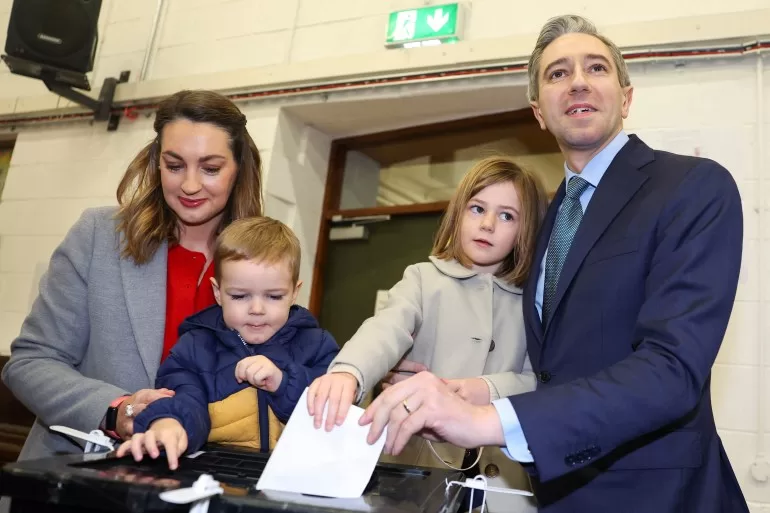Exit poll put left-wing nationalists Sinn Fein at 21.1 percent of votes, slightly ahead of two centre-right parties.
Ireland is tallying votes from general elections as an exit poll suggested a dead heat between the three main parties, with the left-wing opposition Sinn Fein holding a narrow lead.
The counting began at 09:00 GMT on Saturday with partial results expected throughout the day.
A final result, however, may not be clear for days as European Union member Ireland’s proportional representation system sees votes of eliminated candidates redistributed during multiple rounds of counting.
According to the exit poll on Friday conducted by Ipsos B&A, Sinn Fein, which backs Irish unity, led with 21.1 percent of the vote.
Just behind were Ireland’s two centre-right parties, Fine Gael and Fianna Fail, which are coalition partners in the outgoing government. They had 21 percent and 19.5 percent of the vote respectively, according to Ipsos B&A.
If the poll proves accurate, Fine Gael and Fianna Fail, longtime dominant forces in Irish politics, are likely to hold onto power, said Eoin O’Malley, a political scientist at Dublin City University.
They would still need to join forces with several smaller parties to secure an 88-seat majority, she noted.
Sinn Fein’s President Mary Lou McDonald, held out hopes her party would be able to oust the centre right, calling Friday’s elections “a historic day where we can elect a new government for change”.

During the last parliamentary term, the prime ministry rotated between the Fianna Fail and Fine Gael leaders, with the latter’s Simon Harris most recently taking the helm.
Harris, Ireland’s youngest-ever taoiseach or prime minister at 38, was on solid footing when he called for a snap election three weeks ago.
But his party lost ground, in particular after he was seen in a viral clip appearing rude and dismissive to a care worker on the campaign trail.
The three-week election campaign was marked by rancour over housing and cost-of-living crises, public spending and immigration.
Both centre-right parties stressed their pro-business and pro-EU credentials and said returning them to power would ensure stability, particularly with turmoil abroad and the risk of external shocks.
Ireland’s economy depends on foreign direct investment and lavish corporate tax returns from mainly United States tech and pharma giants.
But threats from US President-elect Donald Trump to slap tariffs on imports and repatriate corporate tax of US firms from countries such as Ireland have caused concern for the country’s economic model.
At the last general election in 2020, Sinn Fein – the former political wing of the paramilitary Irish Republican Army – won the popular vote but could not find willing coalition partners.
That led to weeks of horsetrading, ending up with Fine Gael, which has been in power since 2011, agreeing to a deal with Fianna Fail.
McDonald’s Sinn Fein, the largest opposition party, saw a dip in support in the past year because of its progressive stance on social issues and migration policy, as immigration became a key election issue.
But it rallied on the back of a campaign heavily focused on housing policy and claimed it is the only alternative to Fine Gael and Fianna Fail, which have swapped power since Irish independence from Britain in 1921.
